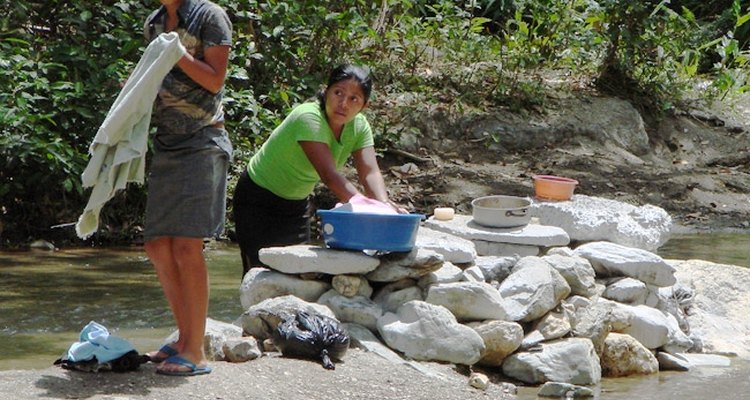
The grip of modern technology makes it easy to forget how life was pre-technology, and laundry is one of the most relevant examples. In ancient times, the normal practice was to wash clothes near rivers, streams and ponds, followed by the beating clothes on whatever rocks were available to scrub them. This is still the standard practice in many Third World countries. In Europe and America wooden bats---or washing beetles---were used to wash clothes.
History
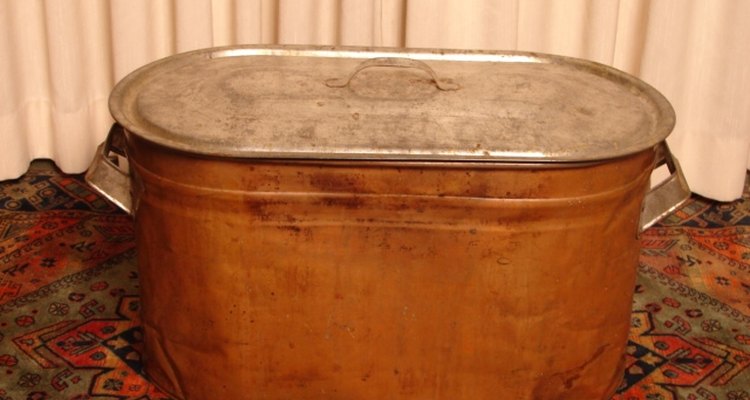
From ancient history to the early 20th century, the basics of laundry remained a back-breaking, hard job, that housewives would dedicate an entire day to completing. The job focused on intensive labor that took many hours. Unlike modern times, people did not wear their clothes for one day and then deem them dirty enough for washing. Instead, due to the sheer labor involved, clothes were considered really dirty by the the time that a housewife finally hauled them out for the task.
Types
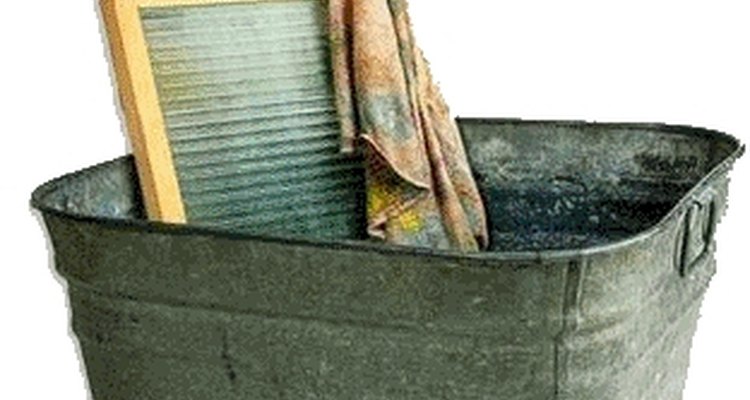
Standard tools used for the laundry, included a wood stove, along with plenty of wood to keep the fire going, wash kettles, wash pots, wringers, bluing material, bristle brushes and lye soap. One important tool was the washboard---a wooden frame surrounding ribbed, crimped metal---which women used to scrub clothes before washing machines came along.
Features

A host of additional tools were required after clothes were washed. These devices included wringers, which housewives used to press excess water from clothes and leaving them damp and ready to hang for drying. This particular task was done with clothespins on a clothesline, or even inside if the weather proved too rainy or cold.
Significance
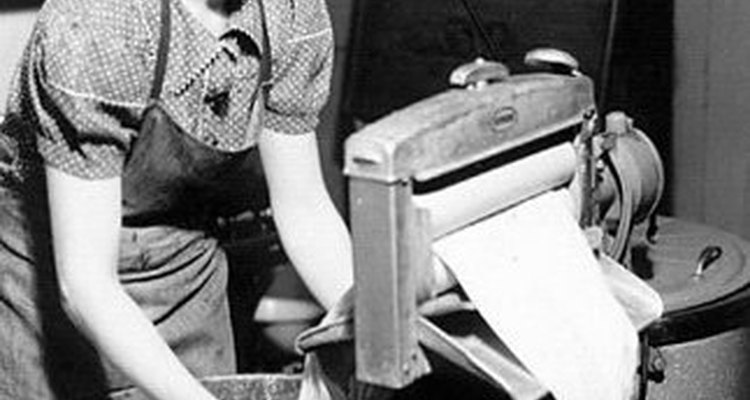
Another method involved sorting the clothes, then collecting buckets of water from a handy local source like the house well or the town pump. White clothes were washed first so that dyes from colored clothes would not stain them. The housewife then scrubbed the clothes with soap on her washboard in a tub of water. The clothes then were put in a boiling kettle of water---sometimes on top of a cook stove or, more often, on an outdoor fire with a giant wash kettle on top. The clothes would be boiled for up to half an hour while stirring the tub with a stick to keep the clothes moving.
Additional Tools
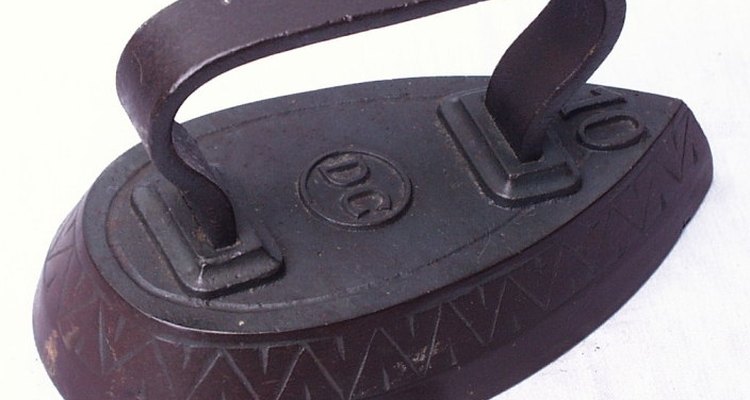
After boiling the clothes were rinsed to remove the soap and then squeezed out manually or with a wringer before being hung to dry. There were many kinds of wringers that housewives could use well into the 1800s. There were some innovations like the James Washer, a combined tub that could be agitated and attached to the wringer.
Warning

Nineteenth-century housewives would have to iron the clothes, usually with heated up cast irons.
Washing was done for other reasons than just removing dirt, such as killing any germs or insect eggs that might be lurking inside the clothes. This was a priority in the 1800s, when sanitation and sewage systems varied greatly from area to area, and were not standardized to the extent they are today.
Early washing machines
There were many early non-electric washing machines built, like the James Washer, but as early as the 1600s rotating drums for laundry first appeared. Often, these devices could be dangerous because of the potential for grabbing onto fingers. The first electric patented washing machines arrived in 1904, a trend that gradually began to reduce the labor burdens associated with the task.
Related Articles
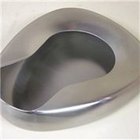
Bedpan Cleaning

Importance of a Soap Detergent

How to Clean Khakis
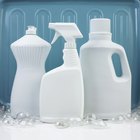
Difference Between Soap & Synthetic ...

How to Remove Petroleum Jelly Stains ...

How to Get Grease Stains Out of ...

How to Get a Hard Water Stain Out of ...

How to Make Your Clothes Not Shrink in ...

The Tools Used for Curling Hair in the ...
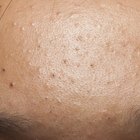
Lava Soap for Acne

What Is the Correct Way to Wash & Dry a ...
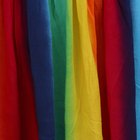
Can You Iron Acetate Fabric?

How to Keep Dirty Laundry From Smelling

How to Wash & Dry Clothes So They Do ...
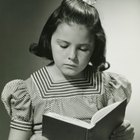
1930s School Clothes
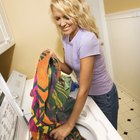
How to Wash Clothes Affected by Smoke

How to Kill Cotton Parasites on Skin ...

How to Shrink Wool Fitted Hats

About Kids in Colonial Times

How to Whiten Underwear
References
Writer Bio
A former teacher and social worker, Lisa Quinlan is an artist and writer with disabilities. She specializes in writing articles about painting and cartooning for various websites and also covers culture- and health-related subjects.
Photo Credits
adventuresofagoodman.com, littlegenealogy.com, affordableaffiliates.com, flickr.com, histru.bournemouth.ac.uk